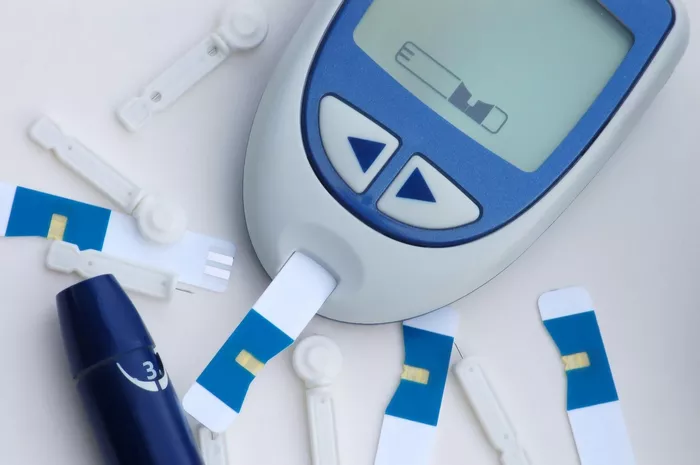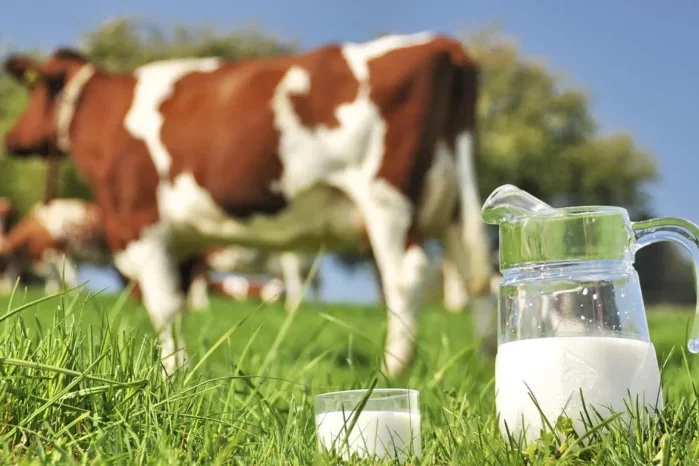Understanding Insulin Resistance
Insulin resistance is a metabolic disorder where the body’s cells become less responsive to insulin, a hormone produced by the pancreas that regulates blood sugar levels. In healthy individuals, insulin helps glucose from the bloodstream enter cells, where it is used for energy. When cells are resistant to insulin, the pancreas compensates by producing more insulin. Over time, this can lead to elevated blood sugar levels, eventually causing type 2 diabetes if not managed properly.
Causes of Insulin Resistance
Several factors contribute to insulin resistance, including:
Genetics: Family history plays a significant role.
Obesity: Excess body fat, especially around the abdomen, is strongly linked to insulin resistance.
Sedentary Lifestyle: Lack of physical activity can reduce insulin sensitivity.
Poor Diet: High intake of refined sugars and unhealthy fats can worsen insulin resistance.
Hormonal Imbalances: Conditions such as polycystic ovary syndrome (PCOS) can impact insulin sensitivity.
Chronic Stress: Prolonged stress increases cortisol levels, which can lead to insulin resistance.
Aging: Insulin sensitivity tends to decrease with age.
Implications on Health
Insulin resistance is a precursor to several serious health conditions, including:
Type 2 Diabetes: Characterized by high blood sugar levels due to inadequate insulin production or poor response to insulin.
Cardiovascular Diseases: Insulin resistance is linked to hypertension, atherosclerosis, and heart disease.
Non-Alcoholic Fatty Liver Disease (NAFLD): Excess fat accumulation in the liver can result from insulin resistance.
Metabolic Syndrome: A cluster of conditions including high blood pressure, high blood sugar, excess body fat around the waist, and abnormal cholesterol levels.
Dietary Changes
Adopting a diet that improves insulin sensitivity is crucial for managing insulin resistance. Here are the key dietary components to focus on:
Lean Proteins
Including lean proteins in your diet is essential for stabilizing blood sugar levels and maintaining muscle mass. Lean proteins have a minimal impact on blood glucose and provide essential amino acids for body functions.
Sources of Lean Proteins:
Poultry: Chicken and turkey breast without skin.
Fish: Especially fatty fish like salmon, mackerel, and sardines, which are high in omega-3 fatty acids.
Legumes: Beans, lentils, and chickpeas.
Low-Fat Dairy: Skim milk, yogurt, and cheese.
Tofu and Tempeh: Excellent plant-based protein sources.
Eggs: Particularly egg whites.
High-Fiber Foods
Fiber plays a vital role in slowing down digestion and preventing blood sugar spikes. It also promotes a feeling of fullness, which can aid in weight management.
Sources of High-Fiber Foods:
Vegetables: Leafy greens, broccoli, Brussels sprouts, and carrots.
Fruits: Apples, pears, berries, and oranges.
Whole Grains: Oats, quinoa, barley, and brown rice.
Legumes: Beans, lentils, and chickpeas.
Nuts and Seeds: Almonds, chia seeds, flaxseeds, and walnuts.
Complex Carbohydrates
Complex carbohydrates, especially those with a low glycemic index (GI), are digested more slowly, leading to a gradual rise in blood glucose levels.
Sources of Complex Carbohydrates:
Whole Grains: Brown rice, whole wheat, quinoa, and oats.
Starchy Vegetables: Sweet potatoes, squash, and peas.
Legumes: Lentils, chickpeas, and black beans.
Fruits: Berries, apples, and pears.
Meal Planning
Effective meal planning is crucial for managing insulin resistance. Here is a sample meal plan that balances the right nutrients:
Sample Meal Plan:
Breakfast:
Option 1: Greek yogurt with chia seeds, fresh berries, and a sprinkle of nuts.
Option 2: Scrambled eggs with spinach and whole grain toast.
Lunch:
Option 1: Grilled chicken salad with mixed greens, cherry tomatoes, cucumbers, and a vinaigrette dressing.
Option 2: Lentil soup with a side of whole grain bread.
Dinner:
Option 1: Baked salmon with quinoa and roasted Brussels sprouts.
Option 2: Stir-fried tofu with mixed vegetables and brown rice.
Snacks:
Option 1: Apple slices with almond butter.
Option 2: Carrot sticks with hummus.
Physical Activity
Physical activity is an integral part of improving insulin sensitivity. Regular exercise helps muscles use glucose more effectively and can reduce insulin resistance.
Recommended Activities:
Aerobic Exercise: Such as walking, running, swimming, or cycling for at least 150 minutes per week.
Strength Training: Activities like weight lifting or resistance band exercises at least two days per week.
Flexibility and Balance Exercises: Yoga and Pilates can help improve overall physical function and reduce stress.
Lifestyle Tips
Managing insulin resistance requires a holistic approach. Here are some additional lifestyle tips:
Weight Management
Achieving and maintaining a healthy weight is crucial. Even a modest weight loss of 5-10% of body weight can significantly improve insulin sensitivity.
Stress Reduction
Chronic stress can negatively impact insulin sensitivity. Techniques such as mindfulness, meditation, deep breathing exercises, and hobbies can help reduce stress levels.
Adequate Sleep
Poor sleep can interfere with insulin regulation. Aim for 7-9 hours of quality sleep per night by maintaining a consistent sleep schedule, creating a restful environment, and avoiding stimulants before bedtime.
Sample Recipes
Here are some recipes that incorporate the recommended foods and nutrients for insulin resistance:
Quinoa and Vegetable Stir-Fry:
Ingredients:
1 cup quinoa, rinsed
2 cups water
1 tablespoon olive oil
1 bell pepper, chopped
1 zucchini, chopped
1 carrot, julienned
1 cup broccoli florets
2 cloves garlic, minced
2 tablespoons low-sodium soy sauce
1 tablespoon sesame seeds
Instructions:
Cook quinoa in water according to package instructions.
In a large pan, heat olive oil over medium heat. Add garlic and sauté until fragrant.
Add vegetables and stir-fry until tender-crisp.
Stir in cooked quinoa and soy sauce.
Sprinkle with sesame seeds before serving.
Baked Salmon with Avocado Salsa:
Ingredients:
4 salmon fillets
1 tablespoon olive oil
Salt and pepper to taste
1 avocado, diced
1 small red onion, finely chopped
1 tomato, diced
1 tablespoon lime juice
Fresh cilantro, chopped
Instructions:
Preheat oven to 375°F (190°C).
Place salmon fillets on a baking sheet, drizzle with olive oil, and season with salt and pepper.
Bake for 15-20 minutes, or until salmon is cooked through.
In a bowl, combine avocado, onion, tomato, lime juice, and cilantro.
Serve salmon topped with avocado salsa.
Shopping Lists
Creating shopping lists can simplify meal planning and ensure you have the right ingredients on hand. Here’s a sample list:
Proteins:
Chicken breasts
Salmon fillets
Greek yogurt
Eggs
Tofu
Lentils
Chickpeas
Vegetables:
Spinach
Broccoli
Brussels sprouts
Carrots
Zucchini
Bell peppers
Fruits:
Berries
Apples
Pears
Avocado
Grains and Legumes:
Quinoa
Brown rice
Whole grain bread
Oats
Miscellaneous:
Olive oil
Low-sodium soy sauce
Chia seeds
Almonds
Flaxseeds
Hummus
Customization
Individual dietary needs and preferences vary. Here are some tips for customizing meal plans:
Vegetarian/Vegan: Focus on plant-based proteins such as tofu, tempeh, legumes, and quinoa.
Gluten-Free: Choose gluten-free grains like quinoa, brown rice, and certified gluten-free oats.
Low-Carb: Opt for lower-carb vegetables and higher protein and fat sources.
Dairy-Free: Use plant-based milk alternatives like almond milk, and choose dairy-free yogurt and cheese options.
Medical Advice
Before making significant changes to your diet or lifestyle, it is important to consult with healthcare professionals. They can provide personalized advice based on your specific health needs and conditions.
Conclusion
In summary, managing insulin resistance through diet involves focusing on lean proteins, high-fiber foods, and complex carbohydrates, coupled with regular physical activity and a holistic lifestyle approach. By implementing these strategies, you can improve insulin sensitivity and reduce the risk of developing serious health conditions.
Related Topics

























